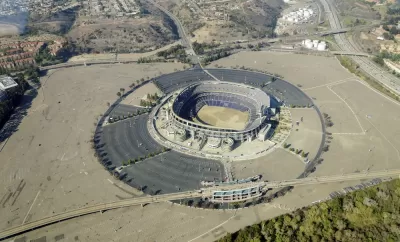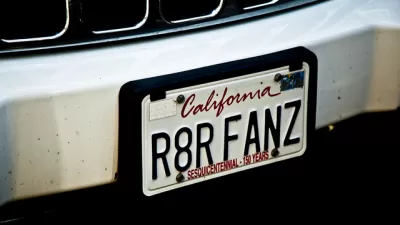The San Diego Chapter of the American Institute of Architecture believes the NFL Chargers’ downtown stadium proposal is full of risk and lost opportunities. AIA - SD opines the existing stadium site is superior both for the fan and the taxpayer.

In an op-ed, the San Diego Chapter of the American Institute of Architects asks San Diegans to look past the glossy images and the media blitz of the NFL Chargers in their effort to secure a new downtown stadium. Earlier in the year, the Chargers ownership rejected a proposal by the City to build them a new $1.2 billion stadium near their existing stadium site. Instead, Chargers’ owner Dean Spanos sought what he believed was a greener pasture in Los Angeles via a joint stadium proposal with the Oakland Raiders on a former landfill in Carson. However, the NFL owners chose a competing proposal by St. Louis Rams owner Stan Kroenke to build a stadium in Inglewood. As a consolation prize, Spanos was given $300 million and the option of becoming a tenant in Kroenke’s new stadium. He has a year to make the decision. Spanos is using the time to push for a new stadium in San Diego's downtown. The Chargers proposal, via ballot initiative, is to build a combination stadium/convention center annex a la Indianapolis’s Lucas Oil Stadium. Public funding will come via a hefty increase to the Transient Occupancy Tax on hotel rooms. Spanos is selling the tax increase as essentially a windfall paid by out-of-towners.
The AIA - SD points out the many costs and unknown risks of the downtown stadium proposal in comparison to building at the existing Mission Valley site. Such costs and risks include the lack of existing road, parking, and transit infrastructure at the new site, the lack of identified funding for such infrastructure, the potential displacement of the current development “renaissance” near the site, the impact of traffic on surrounding communities, the high potential for cost overruns and delays due to environmental and other issues, the lack of sufficient space (15 acres) at the downtown site for a stadium (nevermind a combination stadium/convention center), the convention industry’s preference for expanding the existing convention center rather than building a convention annex attached to a stadium, the potential liability of the city for cost overruns falling outside the scope of Charger's portion of the project, and perhaps most importantly, the existence of a better alternative at the existing Mission Valley stadium site, which eliminates many of these concerns.
To read the op-ed itself, please visit the original article.
FULL STORY: A Football Stadium in East Village? Not so Fast

Alabama: Trump Terminates Settlements for Black Communities Harmed By Raw Sewage
Trump deemed the landmark civil rights agreement “illegal DEI and environmental justice policy.”

Study: Maui’s Plan to Convert Vacation Rentals to Long-Term Housing Could Cause Nearly $1 Billion Economic Loss
The plan would reduce visitor accommodation by 25% resulting in 1,900 jobs lost.

Planetizen Federal Action Tracker
A weekly monitor of how Trump’s orders and actions are impacting planners and planning in America.

Waymo Gets Permission to Map SF’s Market Street
If allowed to operate on the traffic-restricted street, Waymo’s autonomous taxis would have a leg up over ride-hailing competitors — and counter the city’s efforts to grow bike and pedestrian on the thoroughfare.

Parklet Symposium Highlights the Success of Shared Spaces
Parklets got a boost during the Covid-19 pandemic, when the concept was translated to outdoor dining programs that offered restaurants a lifeline during the shutdown.

Federal Homelessness Agency Places Entire Staff on Leave
The U.S. Interagency Council on Homelessness is the only federal agency dedicated to preventing and ending homelessness.
Urban Design for Planners 1: Software Tools
This six-course series explores essential urban design concepts using open source software and equips planners with the tools they need to participate fully in the urban design process.
Planning for Universal Design
Learn the tools for implementing Universal Design in planning regulations.
Caltrans
Smith Gee Studio
Institute for Housing and Urban Development Studies (IHS)
City of Grandview
Harvard GSD Executive Education
Toledo-Lucas County Plan Commissions
Salt Lake City
NYU Wagner Graduate School of Public Service





























